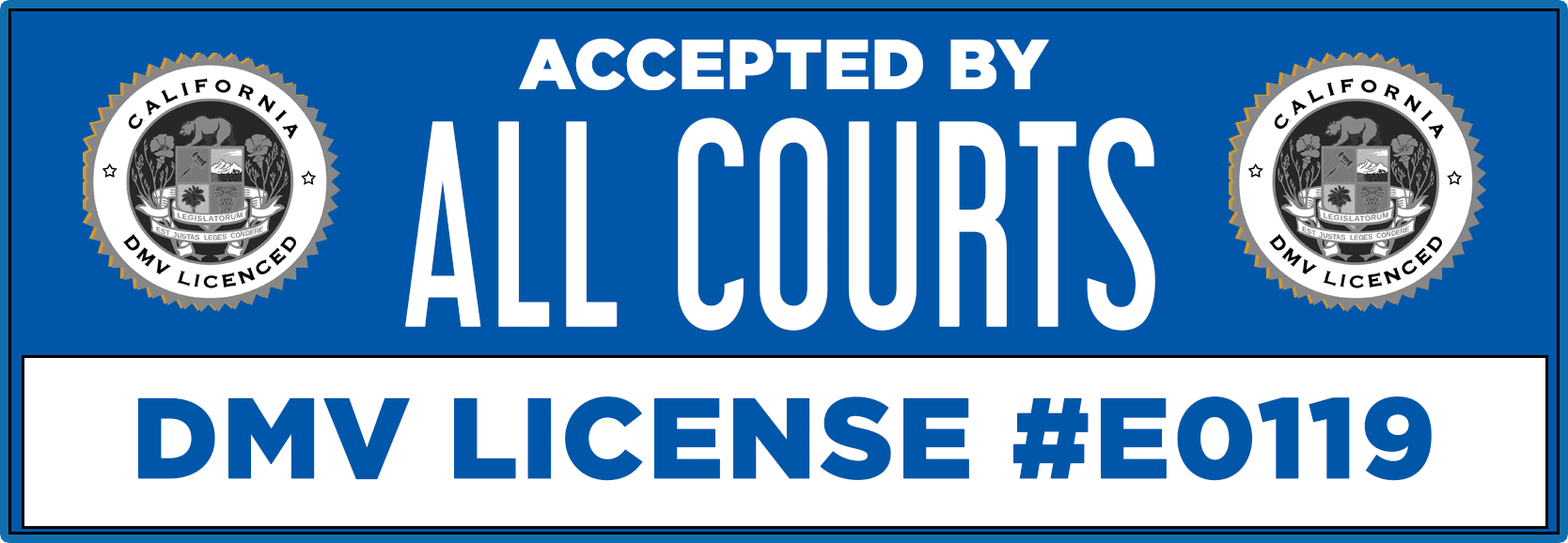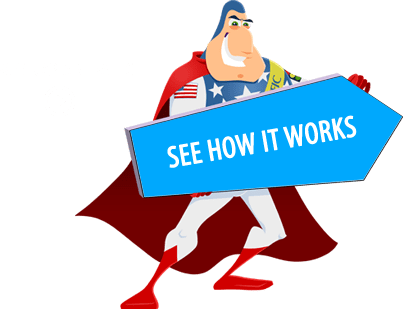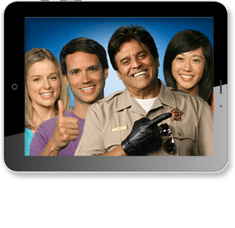Learning About Intersections
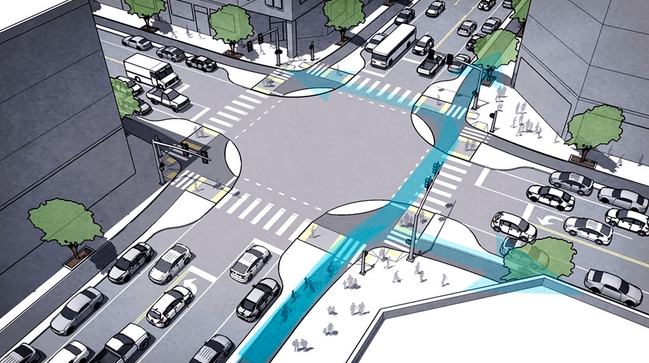
When you come to an intersection, scan for hazards, traffic controls and prohibitive signs; these will help you determine what type of intersection it might be. For instance, controlled intersections are intersections that give the driver some type of indication as to what to do and when to do it. It may be in the form of a sign, a signal, or a person, such as a traffic officer providing instruction as to when to go, stop, or turn. An uncontrolled intersection, however, has no indicators of any kind to control the flow of traffic. Scan for potential hazards because these types of intersections can be deadly. When does a driver stop; when does he go? Which vehicle can go first? These issues concern the definition of “right-of-way,” and it is a most important bit of knowledge to have if you want to drive safely.
“MARKED” vs. “UNMARKED” Intersections:
Painted line markings determine whether it is a marked or an unmarked intersection. If there are painted lines, this means certain vehicles have the right-of-way. If there are NO painted lines, this is an unmarked intersection and the right-of-way is given to the first vehicle to arrive at the intersection, or the vehicle to your right. Always proceed with caution, regardless of right-of-way at an unmarked intersection.
Entering the Intersection with Another Vehicle:
This is a prima facie rule. It applies unless there is a sign or other control stating otherwise. If a driver has the right-of-way to enter an intersection into which another vehicle has also entered yield!
Pedestrians and Intersections:
Another prima facie or default rule. A driver should always yield to a pedestrian even if that pedestrian has no business being in the intersection. When a driver stops at an intersection, he or she should come to a complete stop before the white “limit line” so that pedestrians can safely walk in front of your vehicle.
Changing Lanes Near Intersections:
Intersections are extremely dangerous areas to change lanes or pass other vehicles. It is dangerous to pass another vehicle where someone is likely to enter or cross the road. Such places include crossroads, railroad crossings, and shopping center entrances. While you are passing, your view of people, cars, motorcycles, bicycles, or a train can be blocked by the car you are passing. Also, a driver turning onto the road into the left lane won’t expect to find you in his lane. For safety reasons, avoid changing lanes or passing in an intersection.
Parking Lot or Driveway Intersections:
Drivers entering a street from a parking lot or driveway must yield to all traffic on the street. It would be nice if other drivers let these drivers in; but if no one does, they should not get themselves or someone else killed expressing their frustration.
An uncontrolled intersection has no indicators of any kind to control the flow of traffic and all driving decisions are made by the “Right of Way” rules.
Intersections Without “STOP” or “YIELD” Signs:
Slow down and be ready to stop. Yield to traffic and pedestrians already in the intersection or just entering the intersection. Also, yield to the vehicle or bicycle which arrives first, or to the vehicle or bicycle on your right if it reaches the intersection at the same time as you.
“T” Intersections Without “STOP” or “YIELD” Signs:
Yield to traffic and pedestrians on the through road. They have the right-of-way.
Unprotected Left Turn:
Give the right-of- way to all vehicles approaching that are close enough to be dangerous. Also, look for motorcyclists, bicyclists, and pedestrians. When you turn right, be sure to check for pedestrians crossing the street and bicyclists coming up behind you on the right. On divided, highways or highways with several lanes, watch for vehicles coming in any lane you cross. Turn either left or right only when it is safe.
Four-Way Stops: The driver first arriving at an intersection has the right of way to leave first.
Two Vehicles at the Same Time:
When two vehicles reach an intersection at the same time, the vehicle on the right ALWAYS has the right-of-way. Just remember this simple saying…. “RIGHT = RIGHT-OF-WAY.“
Emergency Vehicles and Intersections:
If an emergency vehicle has a steady burning red light displayed to the front and is sounding its sirens and approaches while a driver is in an intersection, they should get out of the intersection as safely as possible, pull over to the right and wait until the emergency vehicle has passed.
Freeway Intersections:
(on-ramps and off-ramps) On-ramps are also called “acceleration lanes” because their purpose is to provide time for entering vehicles to accelerate and enter traffic at the same speed as freeway traffic. By the time drivers are ready to enter freeway traffic, they are expected to be at freeway speed. If the acceleration lane merges with the slow lane of the freeway, the car entering the freeway must give way to the car already in the slow lane.
To learn more about intersection as well as other types of Traffic Safety information, get started at Comedy Traffic School .COM.
